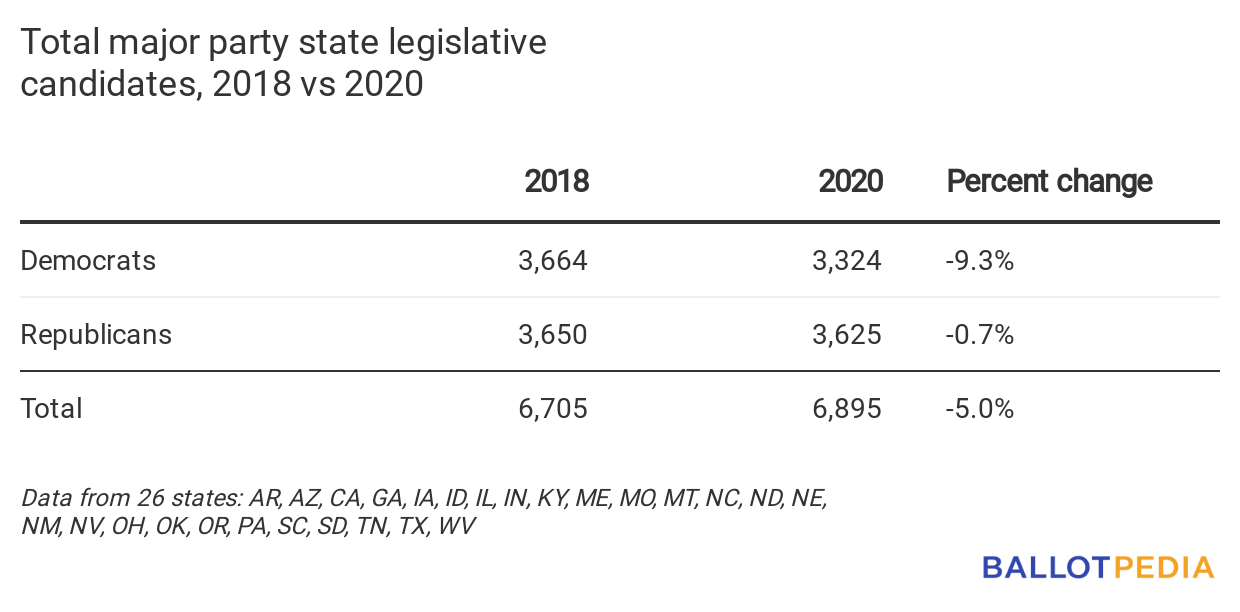Every week, we compile the latest numbers on state legislative candidates across the country. As of April 29, 2020, we’ve collected post-filing deadline data in 26 states. In 2020, 3,291 state legislative seats are up for regular election in those states, compared to 3,227 in 2018.
6,949 major party candidates—3,324 Democrats and 3,625 Republicans—have filed to run for state legislature in these states, compared to 7,314—3,664 Democrats and 3,650 Republicans—in 2018, a 5% decrease.
Elections in open seats tend to be more competitive than those where an incumbent is seeking re-election. So far, there are fewer open seats in 2020 than in 2018. In 2020, 483 major party incumbents (15% of seats up for election) are not running for re-election, compared to 614 major party incumbents (19%) in 2018, a 21% decrease.
More incumbents face primary challenges in 2020 than in 2018. So far in 2020, 581 primaries feature an incumbent. Additionally, one independent incumbent faced a top-two primary in California. In 2018, there were 577 such primaries in addition to a Libertarian incumbent facing a nonpartisan primary in Nebraska. In 2018, 87% of incumbents in these states won their primaries.
Overall, there are fewer contested state legislative primaries in 2020 than in 2018, with 1,071 and 1,229, respectively, a 13% decrease. These totals include all competitive top-two and nonpartisan primaries.
On November 3, 2020, 1,164 state senate seats and 4,711 state house seats are up for regular election for a total of 5,875 seats across 86 chambers in 44 states. There is a Republican majority in 52 chambers, a Democratic majority in 33, and a power sharing agreement in the Alaska House.
See the tables below for more information:




